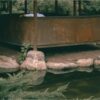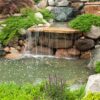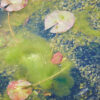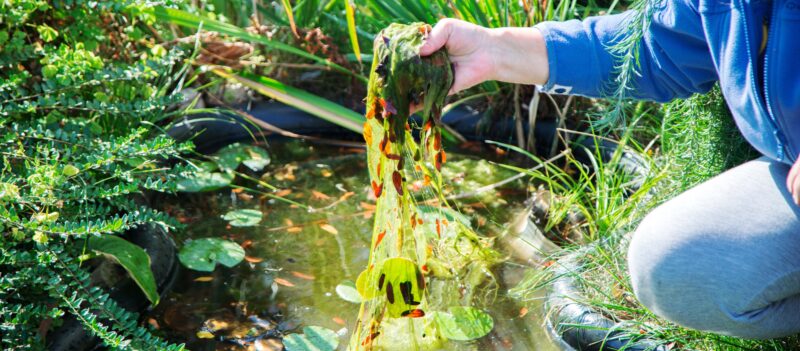The daylight hours are increasing as we move into spring and summer. There are birds singing, trees blossoming, and fish swimming around and eating. Even some of them have started to spawn. Even though it all seems idyllic, it is about time for the green algae crisis to strike ponds worldwide. Pond owners are often plagued by algae overgrowth in ponds.
Understanding what type of algae resides in the pond is the first step in effective algae management. A farm pond or a small lake will typically contain three types of algae: planktonic algae, filamentous algae, and macroalgae.
Causes Of Algae In The Ponds
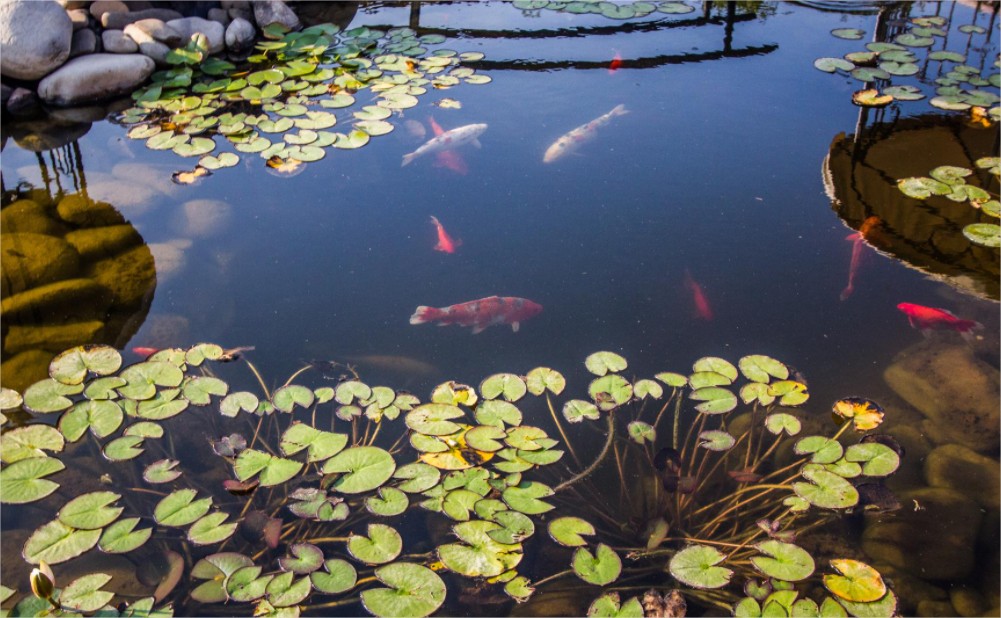
Light and nutrients are responsible for both ailments. To grow, they need nutrients and light. Due to the tight balance between plants and bacteria, algae rarely have any spare nutrients. Aquatic ponds receive nutrients from various sources, such as tap water, fish food, and soil. In the absence of chemicals to remove those nutrients, or if not enough plants are present to drain them, opportunistic algae grow.
Lake ecosystems depend on algae, a natural element of the aquatic food chain. Algae blooms, however, can deteriorate water quality, hamper recreational activities, and damage ecosystems. A bloom of algae and the toxins it produces can damage fish and other aquatic life.
It is necessary for algae to grow that they have light and nutrients. Excess nutrients, particularly phosphorus, can foster algae blooms when sunlight is abundant. As a result of human activity, phosphorus content in rivers and lakes has risen substantially, despite naturally occurring nutrients coming from animal waste and decaying plants.
Treatment Of Algae In The Pond
Chemical algaecide treatments can temporarily resolve a problem but do not control the cause, requiring repeated treatments that cost a lot of money and may harm the environment. You can help reduce phosphorus entering our waters* by employing an effective, long-term, and cost-efficient approach to controlling algae.
To help reduce the amount of phosphorus in your lake, here are a few ideas:
Don’t Feed the Ducks
Why?
A lake enriched with nutrients is a result of feeding ducks, geese, and other birds. Furthermore, there is a risk that their waste will litter your lawn and dock, harboring disease-causing bacteria and contaminating your water, and causing problems such as swimmer’s itch. You cannot feed ducks and geese. You can keep geese off your lawn by planting shrubs and bushes near the shoreline

Reduce Fertilizer Use
Why?
The majority of lawns in the northeast contain enough phosphorus, despite the ingredients in plant foods and lawn fertilizers. The rain will wash away excess phosphorus from lawns.
You can check the amount of fertilizer your lawn needs by soil testing. Do not spread fertilizer right before heavy rain. Use slow-release or phosphorus-free fertilizers. Sweep up fertilizer off the pavement and do not rinse it down the drain.
Maintain the septic system
Why? Older cesspools and overloaded septic systems can leach nutrients and bacteria to your lake.
Install a septic system instead of a cesspool. You should have your septic system pumped and inspected regularly. Conserve water to avoid overloading and look for plumbing leaks. Those containing lye or acid, such as drain cleaners or bleach products, harmful bacteria in your system. Utilize garbage disposals as little as possible to prevent clogging.
Plants that can withstand drought and are native to the area
Why?
The right plant selection and watering can reduce the amount of water and fertilizer needed, reducing the number of nutrients that leach into your lake. Plant native plants for your landscaping. White fescue and chewing fescue are drought-tolerant grasses. The finer the fescues, the less fertilizer they require.
Reduce runoff from rainwater
Why?
Nutrients and other pollutants came into your lake by rainwater runoff from pavements and rooftops. Clean lakes can be maintained by reducing runoff. A rain garden or rain barrel is good to catch gutter downspouts. Plant as many shrubs, trees, and groundcovers as possible on your property so that they can absorb rainwater, especially around driveways and pavement. If possible, winding gravel, stone, or grass paths are ideal along shorelines rather than paving paths to reduce erosion and runoff. To prevent soil erosion, cover gardens and grass with straw.
Implementing these simple and inexpensive methods will result in fewer algae blooms in the future and less need for chemical algaecide treatments.


